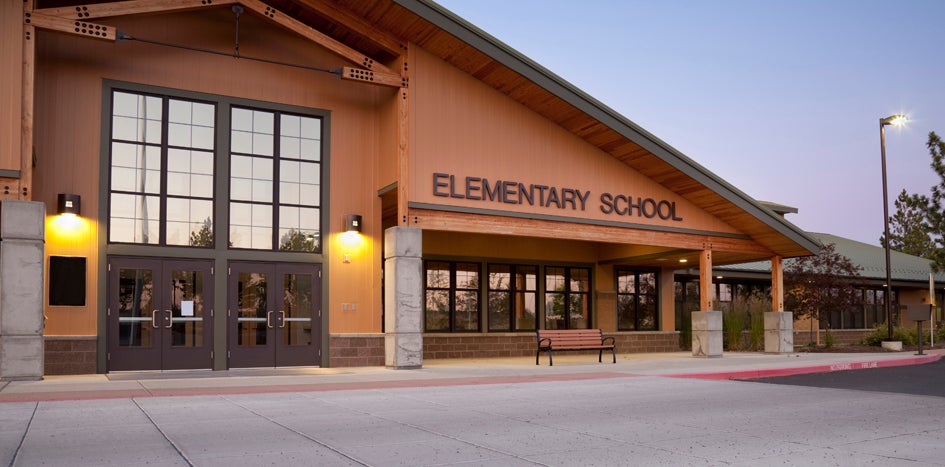How To Avoid Common Winter Weather Claims
Winter weather increases the risk of burst pipes, collapsed roofs, vehicle damage, and employee injuries. Use this winter weather checklist for schools to avoid filing unnecessary claims, repairing damage, and investing resources in returning to normal operations.
Brace your computer servers for power outages
Power outages can damage computer servers and destroy sensitive data. You can manage the risk if you prepare your servers and follow these best practices during an outage.
Prepare your systems
Test your UPS/battery backup equipment now, ahead of the potential outage. Make sure server rooms have proper safety equipment such as flashlights to perform maintenance if you lose power. Put a process/checklist in place to test full functionality of the system when you start it back up. Finally, develop a communication plan to notify users about system status. For example, if email is down, you could send an organization-wide SMS alert.
Check backup power
If an outage occurs, check your UPS/battery backup to ensure power is supplied.
Bring servers back online properly
- Think about the order in which you bring servers online, considering infrastructure first, followed by database servers, file servers, and then application servers.
- Ensure you have instructions for proper boot order of all servers and equipment. Following the specific guidelines for power down/power for your specific server is imperative.
- Follow your process to test full functionality of the system after bringing it back online.
- When testing is confirmed, follow your communication plan to notify users about server/system status.
Protect pipes, buildings, and equipment
During the winter, it’s important to clear ice and snow from tree limbs. The added weight could cause them to break and fall on roofs, power lines, and vehicles. You should also remove leaves, snow, and ice from roofs and gutters, and check roofs and ceilings for loose shingles that can catch wind and trap snow or ice.
Here are a few additional best practices to ensure your facilities and equipment stand up to winter weather:
- Insulate exterior pipes and faucets. Don’t neglect concessions and other smaller facilities that have water sources, as well as pipes above suspended ceiling tiles. Maintenance teams often believe that because these pipes are indoors, they're heated. Unfortunately, areas above suspended heating tiles are not heated, so they often freeze.
- Lock unheated buildings to prevent people from entering and suffering hypothermia and other cold-related illnesses.
- Keep boilers running, test their pressure-relief valves monthly, and get them inspected regularly, per state law.
- Protect fire sprinkler systems.
- Promptly repair leaky doors, windows, and cracks.
- Keep at least three feet of clearance around heat-producing equipment.
- Test backup electricity supplies.
- Ensure exterior doors close safely and securely so they don’t blow open in windy conditions
Follow these tips before closing for long periods
Frozen pipes are the leading property-related risk when the temperature drops. It might seem like a good idea to save money over long weekends and holidays by turning the heat down or off. Unfortunately, most school buildings are decades old and less energy-efficient than their modern counterparts. Age, along with wear and tear, can cause heating loss:
- Open doors to sink cabinets and other areas that have water pipes to allow warm air to circulate.
- Avoid letting interior temperatures drop below 50 degrees Fahrenheit if possible.
- Designate someone to regularly check property for broken or leaky pipes.
Need to let temperatures drop below 50 degrees?
- Run a trickle of warm water from the taps along exterior walls. Moving water is harder to freeze
- Install Underwriters Laboratories-approved heat trace tape or thermostatically controlled heat cable along pipes according to manufacturer instructions.
- Consider shutting off water to the building and draining the pipes but remember:
- Shutting water off could prevent your fire sprinkler system from working. Check with the system manufacturer or installer to be sure.
- Some districts might need their fire marshal’s approval to shut water off.
- Most municipalities require that on-site personnel monitor for fires if water is shut off. Consult your local fire department.
Practice routine vehicle maintenance
Vehicles need special care in the winter. Cold weather can turn warm air in fuel tanks into water, which can compromise fuel economy and engine performance. Your fleet management program should call for routine maintenance on all vehicles.
Follow these tips during the winter and all year long to keep your vehicles road-ready:
- Remove vehicle batteries (cold temperatures drain battery power) and add passenger vehicle batteries to your routine maintenance and replacement schedules.
- Replace worn wiper blades.
- Follow manufacturer instructions for the type of oil your vehicles need in the winter.
- Top off fluids every time the oil is changed.
- Remember that most brakes start to wear out within three years. Learn the signs that brakes need to be replaced, such as increased stopping distance, a shaky steering wheel, or a strange noise when you apply the brakes.
- Regularly test vehicle lights, including turn signals, hazards, and brake lights.
- Check tires and engine belts for wear.
Transportation directors and fleet managers should discuss hazards that drivers might encounter. Visit drivetexas.org to monitor road conditions and cancel or change routes as necessary. Protect drivers by stressing the importance of following winter driving safety tips and knowing what to do during an emergency.
Plan for emergencies
Emergency planning can help you avoid unexpected crises, but you should also prepare for seasonal hazards:
- Establish relationships with reputable water remediation vendors now, before you need them.
- Conduct regularly scheduled security checks of closed buildings. Extend the checks inside buildings to monitor heat, water, and power issues that could cause emergencies.
- Provide staff with emergency contacts at the campus, district, and community levels. Publish the list so parents and the community can report emergencies, as well.
- Make sure key employees are familiar with resources to monitor and communicate weather alerts.
- Prepare cold-weather kits for staff who respond to emergencies. Kits could include slippery/icy floor signs; gloves, hats, and warming packets; flashlights with fresh batteries; a printed list of emergency contacts; pen and paper for taking notes; and water and snacks to help them through long hours away from home.
Prepare employees who work outdoors
Cold weather can linger long after holiday cheer gives way to back-to-school blues. Some forms of cold stress can set in during relatively mild 60-degree temperatures, especially when combined with moisture. Train employees on your organization’s safety procedures, which should include these guidelines:
- Monitor wind chill, which combines temperature and wind speed. Wind chill tells you how cold it feels outside.
- Wear at least three layers of loose clothing but avoid cotton. It holds moisture longer than synthetics.
- Take frequent, short breaks in warm, dry areas.
- Remember that dehydration is a risk in hot and cold weather. Drink warm beverages and avoid alcohol and caffeine. They can hinder the body’s ability to produce heat.
- Schedule outdoor work during the warmest part of the day when possible.
- Walk like a penguin on slick surfaces: Bend your knees slightly; keep your feet flat; take short, shuffle-like steps; and extend your arms at your sides for balance.
Get more expert guidance
Everyone wants the winter months to go as smooth as ice, but let’s keep the ice outside, where it belongs. For more guidance on avoiding winter-weather incidents, take advantage of these cost-free resources:
- HSB tip sheet: Preparing for a Power Outage (pdf)
- HSB tip sheet: Cold Weather and Freeze Alert (pdf)
- National Weather Service website: Winter Weather Safety Campaign

Charles Hueter
Charles Hueter is located in Austin and is responsible for providing risk solutions services to Workers’ Compensation, Auto, Property, and Liability members in ESC Regions 12, 13, and 19 and most of Regions 15 and 18.
Hueter became a risk solutions consultant for TASB Risk Management Services in 2012. He began his career in TASB Risk Management Services in 2000 by providing support to risk solutions consultants and helping Fund members access safety handbooks and videos.
You May Also Like…
View All Related Insights
Elements of Accident Prevention Plans
An accident prevention plan can keep employees safe at work and keep them from taking days off of work. We broke down how to create one and what to include.

The Smart Way to Protect School Property During Extended Breaks
The risk of damage, theft, and vandalism rises in the absence of watchful employees and students. These tips help ensure your facilities are in good condition when staff and students return from extended breaks.

How To Cash In on a Return-to-Work Program
Employers who invest in a return-to-work (RTW) program can improve productivity and cut claims costs. Here are five things the best RTW programs have in common.

How To Manage and Mitigate Your Burn Risks
From bustling kitchens to science labs to maintenance and transportation shops, there are plenty of opportunities for burns to occur at your school or community college.
